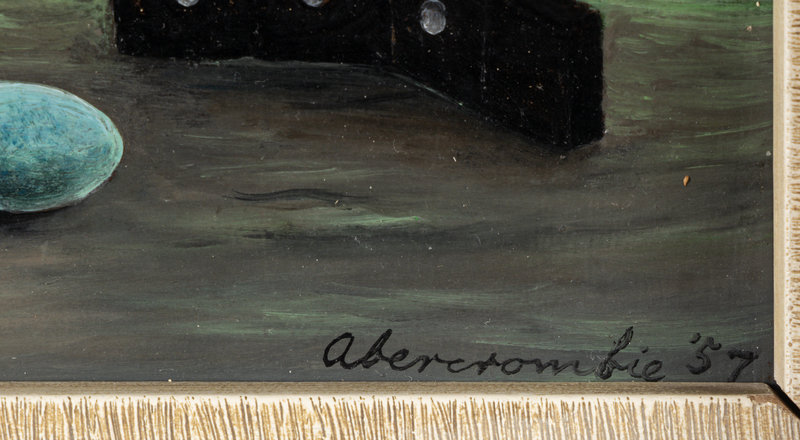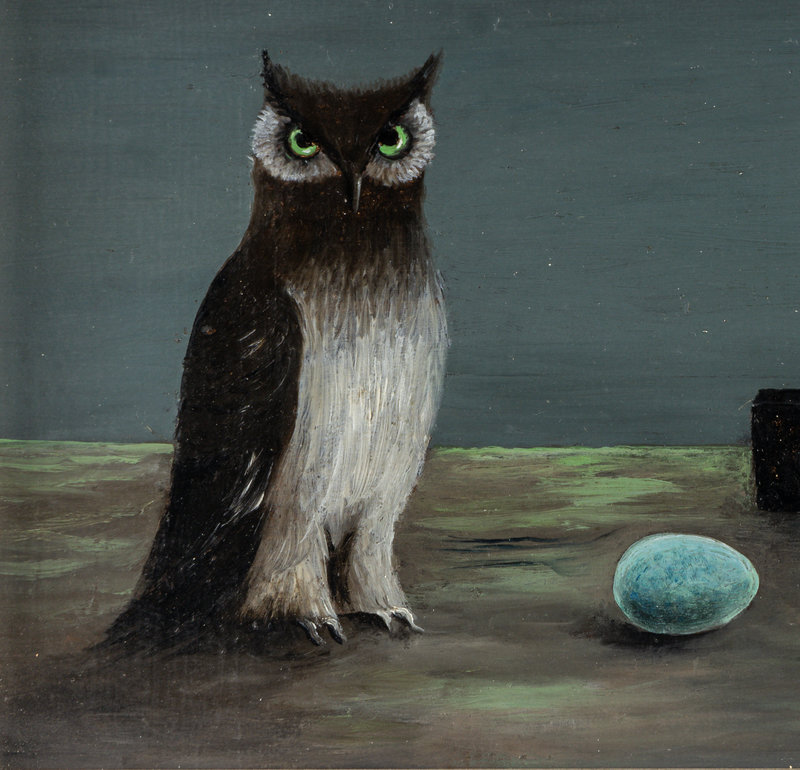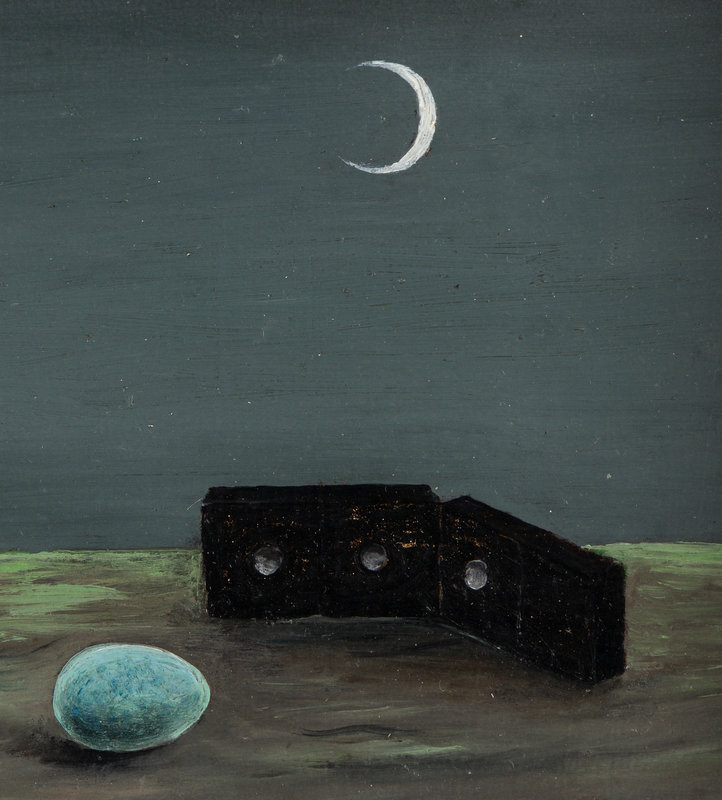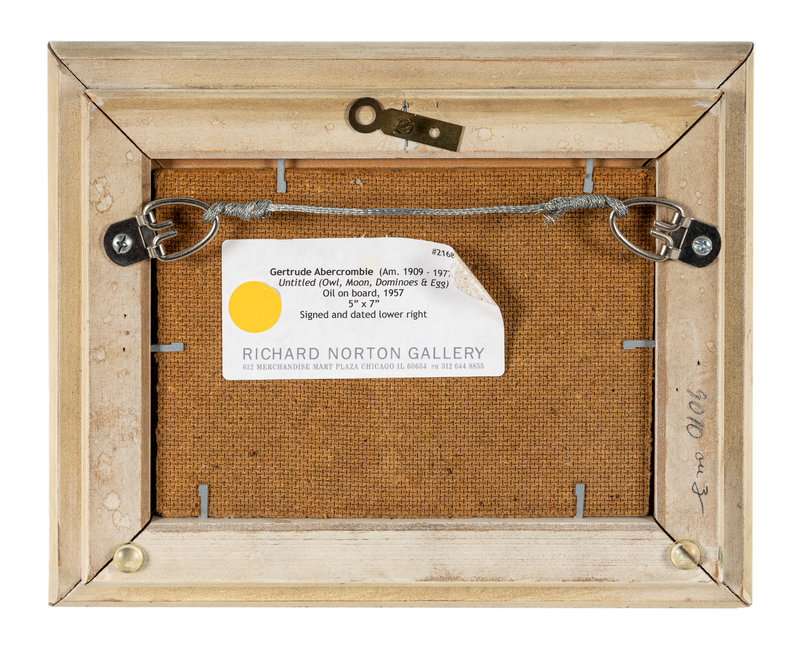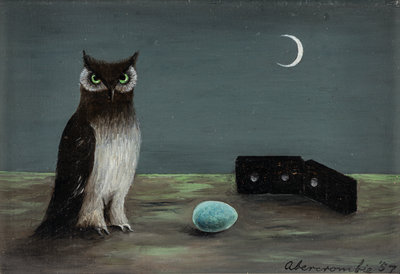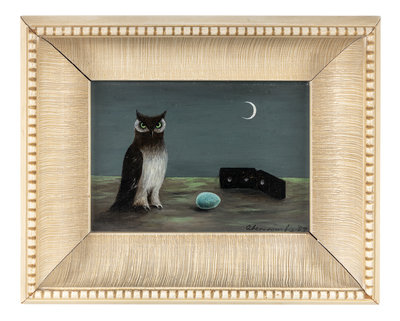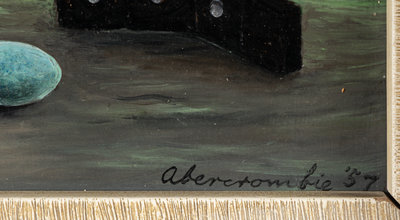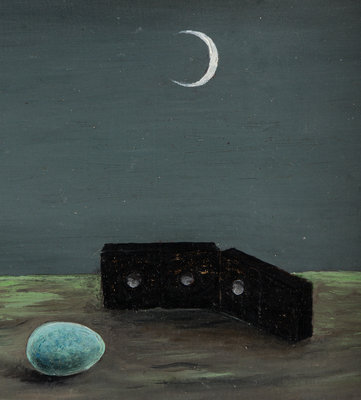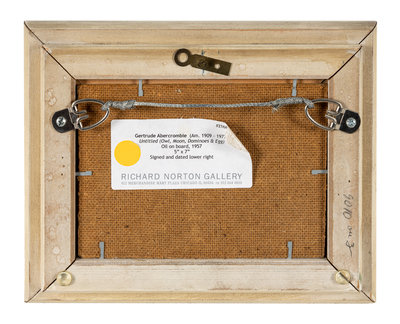Lot 125
We are grateful for the research conducted by Susan Weininger, Professor Emerita, Roosevelt University.
Provenance:
The Artist
Private Collection, sold by the Artist at the Art Institute of Chicago Rental and Sales Gallery, 1957
Richard Norton Gallery, Chicago
Purchased from the above
Lot Essay:
Executed in 1957, Owl and Dominoes was done during one of the artist’s most productive periods. It is typical of numerous still life paintings she painted during the mid-1950s that consist of inanimate objects, with the occasional owls or chicks, arranged in austere landscapes or otherwise ascetic and generic backgrounds. From about 1952-58, she created numerous compositions with elements that include shells, grapes, gloves, jacks, dice, ribbon, carnations, leaves, marbles, balls, and acorns, as well as the owl, dominoes, and egg in the present painting. Many of these objects, such as the owl, gloves, bunches of grapes, jacks, and carnations appear throughout her career. Abercrombie began her artistic life drawing gloves for the Sears catalog and as a result, gloves became a special emblem. Likewise, the carnation was her “personal flower,” as were the bunches of grapes that are sometimes seen adorning hats she wears. Although each of these objects had private meaning, the artist always beautifully arranged these symbols into unique and meaningful configurations.
Abercrombie was also fond of games, which accounts for the appearance of playing cards, balls and jacks, dice, and dominoes in her work. In Owl and Dominoes, the three dots on the dominoes may refer to the three other elements in the painting, that of the moon, egg, and owl. Additionally, eggs had a personal resonance and the artist’s frequent images of eggshells and chicks emerging from eggs provide a clue to their appeal. Like the seashells that became ubiquitous in her work at this time, eggs are a kind of enclosure, a home of sorts. Abercrombie had an abiding interest in spaces that served as a metaphor for her own feelings of isolation and insecurity. The artist found in the shell a subject that not only echoed the idea of enclosure but also allowed her to use tongue-in-cheek humor in themes such as Eggs-It, 1955 (location unknown), Chick in an Egg Cup, 1954 (Private Collection), and Which Came First?, 1955 (Private Collection). The owl likewise appears in too many paintings to name, and always as an embodiment of both wisdom and menace. Although Owl and Dominoes is a seemingly simple still life, it incorporates both the lightheartedness of play, the enclosed space of an inescapable room, and the power accorded to an animal that is the familiar of a witch.
Owl and Dominoes, like many of the paintings done during this period of Abercrombie’s career, are products of a time when she was trying to paint more carefully and precisely, encouraged by her good friend, the artist John Wilde. The wonderfully rendered egg and dominoes show her prowess in creating three dimensional objects and attest to the skills she worked hard to acquire in her traditional art classes at University of Illinois. Abercrombie’s ability to compose a simply and perfectly organized composition, free of anything extraneous, can also be seen. The owl looks intently out at the viewer, its eyes defined by a circular ring of tiny feathers that form crescents and reflect the shape of the moon, while its vivid green eyes echo the green ground. The angles of the dominoes contrast with the curves of the egg, moon, and owl, and act as both link and anchor. With the use of minimal means, Abercrombie’s painting contains worlds.


